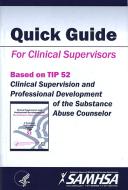This guide provides staff with knowledge and strategies to best support diverse rural communities. It considers risk factors, strengths, and common disaster reactions unique to rural communities to support best practices for ensuring disaster resilience and recovery.
Dashboard: Filter Bricks
Main page content


This Technical Assistance Publication (TAP), updated in 2021, provides guidance for behavioral health service and substance use disorder treatment programs wanting to develop or update a comprehensive, scalable, and flexible disaster plan. It addresses planning needs specific to programs that offer prevention services, outpatient or residential treatment, medically supervised withdrawal, and pharmacotherapy.

This guide helps counselors improve their skills in leading group therapy sessions for substance use treatment. The guide discusses types of group therapy, confidentiality, client placement, group development, stages of treatment, how-to tips, training, and supervision.

This manual offers guidelines for working with suicidal adults living with substance use disorders. It covers risk factors and warning signs for suicide, core competencies, and clinical vignettes. Access the literature review.

This manual presents guidelines for clinical supervision in the substance use disorder treatment field. It covers supervision methods and models, cultural competence, ethical and legal issues, and performance monitoring. The manual also includes an implementation guide for program administrators. Access the literature review.

In a disaster, it's essential that behavioral health responders have the resources they need—when and where they need them. The free SAMHSA Disaster App offers first responders immediate access for any type of traumatic event at every phase of response, including pre-deployment preparation, on-the-ground assistance and post-deployment resources.
With the SAMHSA Disaster App, first responders can:
- Access resources including tip sheets; guides for responders, teachers, parents, and caregivers; and a directory of behavioral health service providers in the impacted area.
- Download information on your phone before deployment in case of limited Internet connectivity in the field.
- Review key preparedness materials to help you provide the best support possible.
- Send information to colleagues and survivors via text message, email, or transfer to a computer for printing.
- Find interventions to help survivors of infectious disease epidemics.
Find SAMHSA’s disaster response information as a publication. Download the SAMHSA Disaster Kit.
For more information, email SAMHSA at samhsainfo@samhsa.hhs.gov

This guide helps clinicians of substance use disorder treatment facilities implement programs that address suicidal thoughts in patients with substance use disorders. It covers legal and ethical issues, referrals, as well as privacy and confidentiality.

This guide offers tips for program administrators on developing an effective program for clinical supervision in the substance use disorder treatment field. It addresses cultural competence, and describes supervisor ethics and values.

This guide offers tips for clinical supervisors in the substance use disorder treatment field. It covers functions of a clinical supervisor, and highlights stages of professional development for counselors and clinical supervisors.

This manual helps clinicians improve care for people living with HIV/AIDS and substance use disorder conditions. It discusses prevention, assessment, and treatment of HIV/AIDS. The manual also examines mental illness, integrated services, case management, counseling, ethical and legal issues, and funding sources.
Displaying 1 - 10 out of 11

